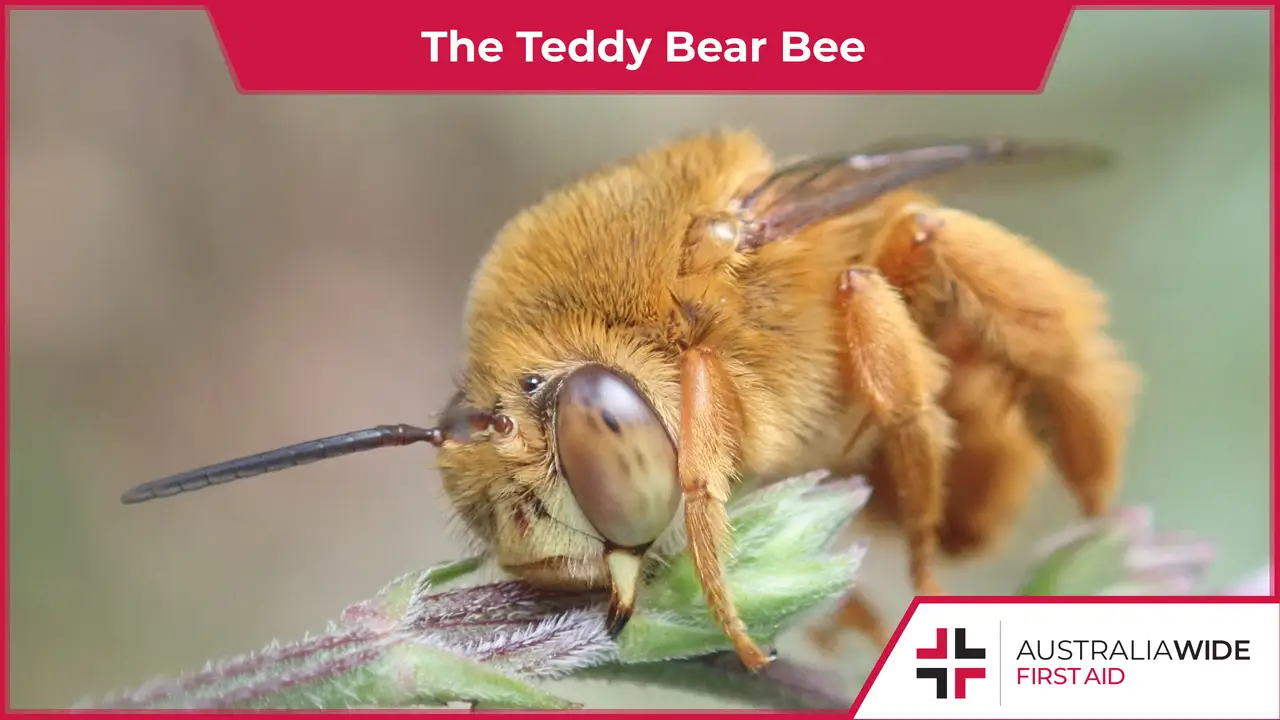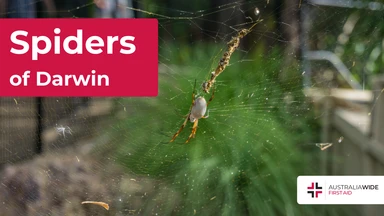First Aid for Teddy Bear Bee Stings


Despite their cute name, Teddy bear bees can a give painful sting on par with that of the Fire ant.
These bees are also unique in that they are solitary creatures, with females building individual nests in soft soil.
Their nests can be found in a variety of regions throughout Australia, and they play an important role in pollinating our flowering plants.
In this article, we will help you become better acquainted with the Teddy bear bee and provide information on what to do if you are stung by one.
We also cover bee stings in our first aid courses:
To book a course near you, head to the Locations page on our website.
The Teddy bear bee (Amegilla bombiformis) has the following identifying characteristics:
These Australian native bees are widely distributed throughout the country, except for Tasmania.
Unlike European honeybees, Australia's common domestic honeybee, Teddy bear bees are solitary creatures.
Females build small burrows for themselves in soft soil near creek banks or underneath houses.
In saying that, Teddy bear bees may build nests close to one another in ideal locations.
Teddy bear bees, or Golden haired mortar bees, play an important role in pollinating Australia's flowering plants, as they are buzz pollinators.
Buzz pollinators create vibrations that cause tiny capsules in certain plant species to open and release pollen.
Unfortunately, ongoing land clearing for human development represents a major threat to native bee habitats.
To help combat this problem, you can plant nectar rich flowers in your backyard to create a native bee-friendly sanctuary.
To teat a Teddy bear bee sting:
The Teddy bear bee is a plump, furry creature that plays an important role in pollinating Australia's flowering plants.
Like most bees, they have a painful sting that can be treated with a cold compress and hydrocortisone cream.
To learn more about treating bee stings, enrol in one of our first aid courses:
Head to the Locations page on our website to book a course near you today.

March 11, 2025
Darwin, the tropical capital of Australia’s Northern Territory, is home to a rich diversity of wildlife - including an impressive array of spiders. From the sprawling webs of golden orb-weavers to the cryptic camouflage of trapdoor spiders, these arachnids play a vital role in the local ecosystem. While some may inspire fear, the majority are harmless and even beneficial, helping to control insect populations.

September 4, 2024
Cat bites, while often underestimated, can lead to serious health complications if not treated promptly and properly. Cats' mouths harbour a variety of bacteria that can cause infections in humans.

April 1, 2024
Encounters with wildlife can often be thrilling, but when it comes to the creature known as the drop bear, the experience can quickly turn dangerous. A sharp increase in recent attacks prompts the need for understanding proper first aid procedures in case of an attack.